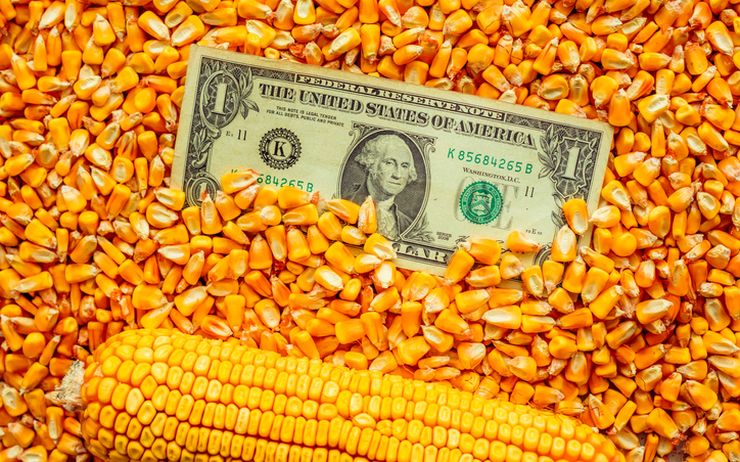Brazil Currency Strengthens and Domestic Corn Prices Decline

The Brazilian currency ended last week at an exchange rate of 4.75 reals per U.S. dollar, which was the strongest in over a year. It has strengthened 14.8% over the past year and the recent strength is a “double edged sword” for Brazilian farmers. A stronger domestic currency means that Brazilian farmers will put less money in their pocket when they sell their grain. On the other hand, a stronger domestic currency means that imported items such as fertilizers and chemicals would be cheaper to purchase.
In a normal year (and this is certainly not a normal year), Brazilian farmers would generally benefit from a devaluation of the domestic currency because it leads to higher domestic grain prices. A stronger domestic currency would generally lead to lower domestic grain prices.
With sky-high prices for fertilizers and the fact that Brazil needs to import 85% of its fertilizers and most its agricultural chemicals, a stronger domestic currency may be “a wash” for Brazilian farmers – lower prices for grain, but also lower prices for inputs. One caveat for this year is regardless of how strong the Brazilian currency becomes; it is possible that fertilizers may not be available at any price.
The Brazilian currency has strengthened for two main reasons – strong commodity prices and high domestic intertest rates. The war between Russia and Ukraine has pushed already lofty commodity prices to even higher levels. Ukraine is a major exporter of grain and oilseeds and Russia is a major exporter of wheat and grain exports from both countries will likely be severely curtailed due to the war, thus driving more interest in Brazil’s grain and oilseed production.
In addition to the increased interest in Brazilian agricultural commodities, the prime interest rate in Brazil is one of the highest in the world. The prime interest rate in Brazil (the Selic) currently stands at 11.75% and it is expected to increase to 13% or more by the end of 2022.
Domestic corn prices in Brazil have been at near record high levels for over a year due to the disastrous 2020/21 corn production in Brazil, but that may be changing. Domestic corn prices in the interior as well as on the futures market in Sao Paulo declined last week.
The safrinha corn crop, which accounts for approximately 75% of Brazil’s total corn production, is off to an OK start and if the weather continues to cooperate, Brazil’s 2021/22 corn production could be much as 25 million tons larger than last year (112.0 million tons in 2021/22 vs. 87.0 million tons in 2020/21), thus pressuring prices.
So, domestic corn prices in Brazil are declining due to a combination of a stronger Brazilian currency and the prospect of a larger 2021/22 Brazilian corn crop.
Read also
Wheat in Southern Brazil Impacted by Dry Weather and Frosts
Oilseed Industry. Leaders and Strategies in the Times of a Great Change
Black Sea & Danube Region: Oilseed and Vegoil Markets Within Ongoing Transfor...
Serbia. The drought will cause extremely high losses for farmers this year
2023/24 Safrinha Corn in Brazil 91% Harvested
Write to us
Our manager will contact you soon



